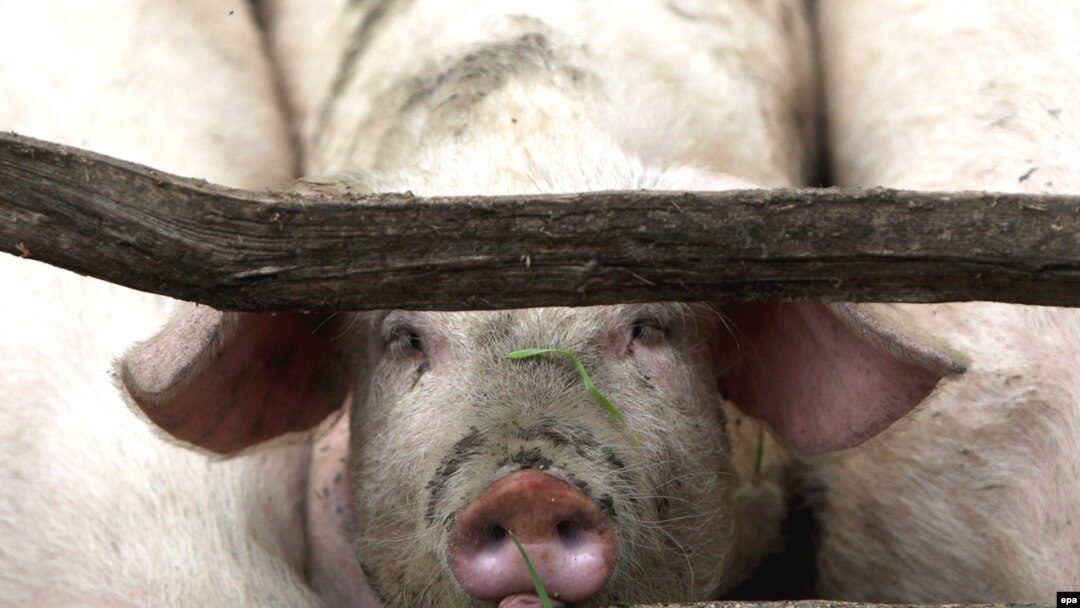What can you buy for 27 lei ($2.45)? Half a pack of Parliament cigarettes. Three ice cream bars. Six packs of Orbit chewing gum. A short ride in a taxi with a little left over to help pay for a ticket to the movies.
But spending a weekend in a village in northern Moldova completely changed my view of what 27 lei is. That’s exactly how much 1 kilogram of pig meat will earn you. That’s the price that middlemen have set for buying pork in the villages. They then take the meat to towns and cities and sell it for 90-98 lei.
Farmers are in a no-win situation. If they don’t sell for 27 lei, they won’t find any buyers for their meat. You won’t be able to go to a market somewhere and try to sell your meat for, say, 50 lei. They won’t let you in – all the market stalls are taken by the retailers working with the middlemen.
Anyone with the nerve to try to get a stall will soon give up the effort – either they won’t get a license or the health inspectors won’t sign their forms.
I was told that it takes from six months to a year to raise a decent pig. You feed it, take care of it. All that takes money and time and effort. After a year of work, you get about 300-400 lei for your pig. And the guy you sell it to turns around the next day and gets 1,200-1,600 lei for his “efforts.” Your average villager raises two or three pigs a year – that’s all he can afford to do.
I met a guy named Mircea, who is considered a prosperous farmer in his village. In addition to two pigs, some cows, and a couple dozen chickens, he has a pretty nice vineyard. In fact, he has no garden because all the land around his house is planted with grapes. He expects to produce about 60 buckets of wine this year. The best price he’ll get for the wine is about 10 lei a liter, meaning that his gross income on the wine will be 6,000 lei.
In other words, he tended his vines for a year and earned almost $1,000. He’ll take that money and buy some firewood, silage, and, maybe, something to eat.
I guess it is up to the proper government agencies to figure out if it is normal that rural dwellers earn kopecks while all the profits from their work go to middlemen. And they should look into this soon, inasmuch as almost 60 percent of the population lives in the country and works the land.
I’d really like to look in the eyes of those who for the last eight years talked of almost nothing except supporting the village and reviving the Moldovan countryside. It looks like they revived something else entirely.
But spending a weekend in a village in northern Moldova completely changed my view of what 27 lei is. That’s exactly how much 1 kilogram of pig meat will earn you. That’s the price that middlemen have set for buying pork in the villages. They then take the meat to towns and cities and sell it for 90-98 lei.
Farmers are in a no-win situation. If they don’t sell for 27 lei, they won’t find any buyers for their meat. You won’t be able to go to a market somewhere and try to sell your meat for, say, 50 lei. They won’t let you in – all the market stalls are taken by the retailers working with the middlemen.
Anyone with the nerve to try to get a stall will soon give up the effort – either they won’t get a license or the health inspectors won’t sign their forms.
I was told that it takes from six months to a year to raise a decent pig. You feed it, take care of it. All that takes money and time and effort. After a year of work, you get about 300-400 lei for your pig. And the guy you sell it to turns around the next day and gets 1,200-1,600 lei for his “efforts.” Your average villager raises two or three pigs a year – that’s all he can afford to do.
I met a guy named Mircea, who is considered a prosperous farmer in his village. In addition to two pigs, some cows, and a couple dozen chickens, he has a pretty nice vineyard. In fact, he has no garden because all the land around his house is planted with grapes. He expects to produce about 60 buckets of wine this year. The best price he’ll get for the wine is about 10 lei a liter, meaning that his gross income on the wine will be 6,000 lei.
In other words, he tended his vines for a year and earned almost $1,000. He’ll take that money and buy some firewood, silage, and, maybe, something to eat.
I guess it is up to the proper government agencies to figure out if it is normal that rural dwellers earn kopecks while all the profits from their work go to middlemen. And they should look into this soon, inasmuch as almost 60 percent of the population lives in the country and works the land.
I’d really like to look in the eyes of those who for the last eight years talked of almost nothing except supporting the village and reviving the Moldovan countryside. It looks like they revived something else entirely.



